Welcome back to Wonderland.
This series explores philosophy and political theory from first principles. Please start from the beginning of the series to follow along with the story.
Difference is the precondition of identity. Without knowledge of what sets us apart, we have no means of conceptualizing ourselves. Consciousness undifferentiated is akin to God1, while mind constrained and striving against the confines of matter is what makes us human.
Sexual stratification is the first dimension of identity within a species. Sexual dimorphism and the consequences it carries create the foundation of our world, influencing the character of our bodies, psyches, societies, and mythologies. Throughout most of human history, the nature of these relationships has been accepted as practical and inevitable. But current cultural conversations are calling us to turn these presumptions on their head, and instead question our beliefs about the connection between sex, gender, sexuality, and identity.
To what extent this deconstructive discourse is productive is open to interpretation. Do we need to liberate society from outdated ideas and expectations? Or are these collective understandings an emergent and necessary aspect of who we are? Given that variance and incongruence are required to explore systems, should exceptions to the rules be celebrated or interrogated? These are the topics this episode will examine.
To start our journey, let’s pick up from where we left off in Wonderland…
Wonderland is a free publication that outlines a philosophy and political vision for the 21st century. To support my work and receive updates on new posts, sign up for a free or paid subscription.
Chapter One: The Black Spot
The first thing you see when you awake at the Inn is the crumpled bit of paper lying next to you on your nightstand. It’s the note you were given by the woman you met last night, the “treasure” she asked you to bring back to the White Rabbit. You try to imagine what great news or epic insight could be written inside, and reason that it couldn’t hurt to take a peek. You snatch the piece of paper off the nightstand and open it to reveal nothing but a big, black spot. Strange.
You flip the note around but the back side is blank. Could this be some sort of secret message? You get up to bring the paper into the sunlight and catch sight of a creature standing in your dressing mirror. You squeak and cover your mouth in surprise, watching as the figure in your reflection does the same.
A large, four-foot-tall field mouse stares back at you, black eyes wide with disbelief. You watch as long, grey hairs stand on end and a shiver runs down your spine. The maroon nightclothes you wore to bed last night are now oversized and dangle loosely over scrawny, furry limbs. You tentatively reach up a pink paw to feel your round, fuzzy ears and long, delicate whiskers. You attempt to tug at your features, as if they could be slipped off like a mask—Surely this can’t be right! What could have happened? Everything was fine last night…
A knock at the door causes your ears to perk up and swivel to the right. “Yoo-hoo! Is everything alright? I heard a strange noise from down the hall,” calls the White Rabbit.
You and the mouse share a look of panic.
“Yes!” You squeak, wincing at the high pitch of your voice. “I don’t feel well,” you add in a hurry.
“Gee, you don’t sound well either,” replies the rabbit from behind the door. “I’ll make you some nice ginger tea with honey, that ought to set you straight.” He departs down the hall and you’re able to hear the sound of his footsteps all the way to the kitchen.
It might take a bit more than tea, you think to yourself, sitting solemnly back down on the bed. A stabbing pain in your rear causes you to leap up with a yelp. Grasping at your backside produces a long, thin tail that you stroke soothingly to restore its shape.
How could this have happened? You wonder, mentally retracing your steps. Surely you would have noticed those pink paws and sharp claws the moment you reached for the note, so something must have happened between your bed and the dressing mirror. You eye the note lying open on the nightstand and determine it must be enchanted somehow. You pick it up, look at the black spot, and then back at the mirror. Nothing changes. You close it and open it again, as if seeing it with fresh eyes. Still nothing.
Why would that women have said it was a treasure? Gazing at the foreign reflection in front of you, you can’t help but feel as though you’ve been cursed.
Chapter Two: Difference
Section #1: Sex
Sex is a subset of nature, it represents the natural within man2. The adaptive benefits conferred by sexual reproduction produce more genetic variance and thus more biological resilience. Through difference, organic life can grow increasingly complex while avoiding the evolutionary pitfalls of unicellular duplication and mutation. Asexual reproduction relies upon chance and consistency, viability is either black or white. Sexual dimorphism introduces shades of grey. The survival of a species is no longer contingent upon the whole, but the feasibility of myriad parts, each with its own unique character.
We are all female by conception. Genetic activation from the Y chromosome during embryonic development is required to begin the process of masculinization. Thus, sex is inherently binary. Disorders of sexual development that result in atypical, intersex characteristics do not disprove this primordial truth, they substantiate it. Exceptions to the rule are not new rules, they are evidence as to why rules exist in the first place.
Sexual divergence has behavioural and causal repercussions. Differences in biology create differences in functional and social realities, which evolve in tandem with physical traits. Men and women face different selection pressures, motivating disparate mating behaviours and social roles. Culture, psychology, and biology co-evolve, creating a feedback loop that magnifies sexual differences over time. Women, born with a limited number of eggs and bearing the responsibility of child rearing, must exercise discernment when choosing a mate. Men are free to spread their seed, while wombs are a limited resource. This inherent asymmetry leads to many more. Men grow big and strong to protect the vulnerable mother and child, while women grow soft and warm to accommodate the needs of their infant. The primitive roles of hunter and gatherer are a simple product of bio-logic.
Our lives as physical beings give rise to basic metaphors of apprehension, which vary greatly between the sexes3. It is only natural that patterns of behaviour should arise as well as meaningful exceptions. Women are expected to be more emotional, timid, and orderly than their male counterparts, but if these temperamental differences are a consequence of culture or biology is a complex question. Biology forms the basis that culture reasserts, and what is valued culturally is propagated biologically in a process of mutual construction. Even subtle differences between the sexes are amplified on the social stage. Men and women are equally intelligent, on average, but men stray further from the mean in both directions. The ability to be a genius or an imbecile is a luxury that most women simply cannot afford, for the reproductive risks far outweigh any potential reward.
Scandinavian countries that have done the most to promote equitable treatment of the sexes have unintentionally exacerbated their differences. When men and women are free to pursue their interests, uninfluenced by external pressures, they tend to reproduce the same stereotypical patterns that their nation’s policies sought to deconstruct. The implicit influence of biology is actually accentuated when other motivating factors are mitigated. A developing country must maximize productive potential at the cost of personal desire. You will find many more women in STEM in Turkey and Tunisia than you will in Finland or Norway. This is not because Turkish women are fundamentally more interested in math than their Finish counterparts, but because they are in greater need of the economic advantages that such careers confer.
There is no reason to assume that the sexes should be equally represented in any field. Fundamentally, men and women are more similar than they are different, but even a small disparity in attitudes or interests is compounded through the eyes of culture. The cliché that men are more interested in things while women prefer people comes with many implications. Not only will they tend towards different occupations, but this disparity will be most notable at the extremes. The vast majority of nurses are women while the vast majority of engineers are men, for instance. Similarly, a slight asymmetry in agreeableness will produce dramatically different rates of incarceration. It’s important to remember that these discrepancies exist for a reason. They are not arbitrary, but carry functional utility and will crop up consistently across cultures. Specific notions of masculinity of femininity may vary, but the biological through-line and subsequent relational dynamics are inevitable.
Section #2: Gender
Gender emerges at the intersection between nature and culture. Sexual differences are accentuated through social roles and expectations, the particular manifestations of which will vary across time and place. These standards act as effective models for good behaviour, providing a framework that can guide individual actors towards productive and prosocial ends. Women are expected to be sensitive and gracious, while men are taught to be tough and persistent. These values are reflected in our cultural narratives; the classic heroine leverages her perceptiveness and empathy to achieve social harmony, while the hero’s journey is defined by conflict and conquest.
While built upon biological realities, the stereotypes embedded within these stories and social expectations can also be restrictive. Over time, the pragmatic aspects of gender are overshadowed by superficial signals. The notion that pink, makeup, or high heels are inherently feminine is a recent development, and thus more malleable. Styles will change, but substance contains a consistent and essential character.
Gender is ultimately a sexual signal, the stratification of which emerges at puberty. Children are essentially androgynous. They may exhibit different preferences and behaviours, but they are generally free from the societal pressures that are imposed in adolescence. When young girls start wearing bras and applying makeup, they acquire an awareness of themselves as sexual beings. The same is true in the animal kingdom, where physical indicators of sexual dimorphism do not arise until maturity. Lion cubs and baby ducklings are visually indistinguishable before a certain age. But unlike our animal counterparts, it is women whose features are adorned and accentuated. In a culture of monogamy, a homely womb is not sufficient to attract the commitment of a desirable mate. Thus, elevating one’s appearance becomes an efficient method of inviting and maintaining male attention. Female fashion encourages men to act upon their desires by providing an explicit justification for the primal and shadowy motives underlying his instinctual compulsion.
Gender, abstracted from sex, is a useless and meaningless concept. It offers no causal or explanatory power aside from that with sex confers. It is an intermediary process which has been crystallized by culture, complicating what should be straightforward. Gender is just social stereotypes about sex. Any time the word “gender” is used, “sex stereotypes” could easily replace it. The notion of gender as distinct from sex didn’t emerge until the 1950s, and the term remained relatively obscure until the late 80s4.
This shift in vernacular was a result of the feminist movement, which advocated that distinctions between the sexes were oppressive, arbitrary, and artificially constructed. This Rousseauian insistence upon blank slatism may have been politically expedient, but it sacrificed our understanding of what it means to be a woman in the process. To render womanhood as an invention of culture rather than a consequence of biology achieves social progress at the price of honesty. There is now a genuine fear that to recognize meaningful differences between the sexes would threaten women’s right to political equality. But having to repress these realities and pretend that nature has no influence on psychology is what actual misogyny looks like. Political ends must be achieved on their own terms, they are helpless against ancient and archetypal truth5.
Section #3: Archetypes
As Camille Paglia states in her seminal work, Sexual Personae, “as long as imagination is informed by culture, it may be impossible to free the sexes from their inherited meanings in art.” Throughout the text, Paglia employs the Nietzschean dialectic of Apollo and Dionysus as her primary means of artistic analysis. The Greek god Apollo is associated with order, structure, logic, and culture. Dionysus, his half-brother, represents chaos, fluidity, emotion, and nature. These contrasting yet complementary forces are analogous to the Chinese notion of Yin and Yang. The white Yang is static, active, hard, and masculine. The black Yin is dynamic, receptive, soft, and feminine.
The identification of woman with chaos, nature, and emotion is a cultural universal. Art, myth, and religion leverage these implicit associations to communicate timeless truths about the world and what it means to be human. The symbolic significance of woman is not a product of sexism, but a consequence of her fundamental essence. Female bodies are at the mercy of Mother Nature in a way that men will never fully comprehend. The cyclic character of menstruation, the burden of pregnancy, and pain of childbirth teaches women from a young age that their bodies are not their own. They are vulnerable to chaotic forces outside of their control, and must learn how to tolerate the innate turbulence of their sex.
If woman is water, then man is an arrow. He must act, penetrate, and dissect. Free from the obligations and innate objective of the gestational organ, man must organize. Women build bodies so that men can build civilizations. Erecting monuments and establishing governments is how man searches for meaning. Lacking the ability to generate from within, he must direct his productive energy outwards. Woman’s centrality within the great chain of being grants her a level of security. She does not have to prove her value, for she is the prize. Simply being is sufficient, whereas man must become something worthy of propagation. He constructs and she selects. The fear of feminine judgement is what fuels the male drive towards dominance and submission. Woman is at the mercy of nature, but man is at the mercy of mother.
It should be noted that archetypal convention does not always map on to social reality. The divine feminine is Yin, Dionysian, Kali, chaos, passion, secrecy, and destruction. However this does not suggest that women are more likely to act this way in society. If anything, they tend to be more orderly, complacent, and consistent than their male counterparts. Likewise, the divine masculine is Yang, Apollonian, Abraham, structure, logic, action, and protection. The fact that men in practice are often the ones with messy rooms and exhibiting aggressive, anti-social behaviour does not negate their archetypal essence. Both of these sexual forces are latent and act within all of us. By understanding their origins we can cultivate a better understanding of our selves.
Section#4: Identity
Sex is fundamentally relational. “Male” and “female” are defined through their differences. Contrast begets character; there can be no knowledge without union. Consciousness in a vacuum has no means through which to acquire a sense of self. Only through exposure to others can we begin to develop an idea of who we are. Identity is thus interpersonal, it requires comparison and mutual construction, it is contingent upon how others perceive and react to you. Cultural context gives rise to personal narratives and influences our psychological experiences.
Identity acts as an anchor, a tool that we and others use to help us navigate the world. Humans need heuristics to cling to, for reality is far too complex to take on without any priors. To name is to know, and to know is to control6. This knowledge acts as the basis of us versus them, and can be a source of pain or pride. Liberal, conservative, fat, thin, black, white, gay, straight, male, and female all come with their own in-group and subsequent set of stereotypes. The degree to which we comply with these societal expectations is something we are all aware of. Personal congruence or incongruence with the norm creates a second-order identity that is defined in relation to the first. He’s very effeminate for a straight man, “you ain’t black”, I’m not like other girls… and so on.
The most potent elements of a given identity are not based in the facts of reality, but our symbolic architecture. A woman is not an adult human female, she is a set of ideas and beliefs about what womanhood entails. A white male author can write a story from the perspective of a black teenage girl because our collective imagination has specific notions about what that experience involves. This representation is informed by first-hand accounts, second-hand perceptions, and general cultural impressions.
But beliefs are not the same as being. Stereotypes are shortcuts. The richness of our inner lives cannot be summarized through a set of generalizations. Being is not the same as empathizing, identifying, or feeling. Identity is grounded in material reality, not our imaginative capacity. Being a woman comes with a set of biological features that have psychological and sociocultural consequences. These experiences will vary widely within a given group, but they are united by an explicit set of physical traits.
A society that is wealthy has the luxury to start thinking about concepts abstractly. Without immanent, material concerns, it becomes easier to grow untethered from the objective facts of reality. Practical aspects of identity are slowly eschewed in favour of metaphysical ones, and it’s easier to develop bad metaphysics than bad empiricism. The recent change in tone of our collective conversations on this topic represents a fundamental shift in our cultural epistemology. Namely, the belief that we can arrive at truth claims based on feeling instead of fact. Benevolent acquiescence is the new virtue; nothing is bad except for asserting that some truths are more valid than others. As Paglia would say, earth-cult has lost to sky-cult, and mind believes itself to be free from the confines of matter. But there are consequences to this epistemic conquest, the erosion of sex is lieu of desire is merely the first casualty in a battle of ontology.
Chapter Three: The Witches of WU
When the rabbit returns with the tea, you decide to open to door, warning him just beforehand that something strange has happened. The sight of your new face causes him to jump a good two feet in the air, nearly dropping the tea tray in the process.
“Good garden! You look magnificent!” He exclaims, thrusting the tray into your hands and reaching out to stroke your fuzzy cheek. “There are far too few rodents in UM these days, it’s mostly frogs and cats. How did you happen upon such a happy transformation? A potion this powerful must be hard to come by! I didn’t think the Princess allowed such magic within the city.”
“I didn’t drink a potion!” You insist shrilly. “I didn’t want this to happen at all! Last night I met a woman while waiting for a boat to go to the baker, and she gave me a note to give to you, said it was some kind of treasure. This morning I was curious what was written inside, so I opened it, and the next thing I know I look like this!”
The rabbit’s white fur puffs up a few inches. “Where is this note?” He demands.
You set the tea tray down on the dressing table, and hand the folded piece of paper over to the rabbit. “Be careful,” you caution. “Who knows what you could turn into!”
“Don’t worry about that,” he replies. “Believe it or not, I didn’t always look like this. And if this is what I think it is, then the spell will only work once.”
He opens the note with a degree of reverence, revealing the black spot, and lets out a nervous chitter. “This is not good. This is not good at all. This is dark magic.”
He leaps forward, waving the note frantically in your face. “Who gave this to you?!”
“I don’t know!” You insist. “Some lady I bumped into. She was very pretty and had dark, curly hair, but that’s all I remember. Do you know anyone like that? I assumed you two were friends.”
The rabbit frowns. “No, we’re certainly not friends. It sounds like you met Meera, the High Witch of WU. Somehow she must have managed to get past Tru… I need to inform the Princess immediately! If she’s breeched the city then something terrible must be coming.”
“I don’t understand,” you say. “Why would this witch want to curse you?”
“That note wasn’t for me, it was for you,” replies the rabbit as he buttons up his waistcoat. “She must have known that your curious nature would cause you to open it.”
“Why would she want to turn me into a mouse?!” You squeak as he heads for the door.
The rabbit whirls around. “I don’t know. Maybe just so we know that she can. The Sorcerers of Sect and Witches of WU can’t stand UM and the prosperity of the city. The rest of Wonderland is dominated by danger and deceit, so the common people rely upon dark magic to protect what they hold dear. The sorcerers and witches profit from their fear. Here, we have peace and prosperity, protected from their meddlesome ways by our enchanted enclosure. At least, until now. I really must run to the palace, we haven’t any time to waste!”
“Wait!” You cry. “What should I do while you’re away?”
“Whatever you like,” replies the rabbit. “Talking animals are perfectly ordinary here. Just don’t stray too far, that witch could be anywhere. And don’t tell anyone the truth of what’s happened to you! Not yet. We don’t want to cause any unnecessary panic.”
He reaches into his coat pocket and gives you a brass key. “Take some clothing from my room down the hall if you like, it will probably fit better than your current attire. And drink that tea before it gets too cold! It wont make you human again, but it’s good for the nerves anyhow. I’ll be back by nightfall.”
The rabbit vanishes down the hall, leaving you with a large key clutched between pink fingers. Or maybe your hands are simply too small.
Chapter Four: Dissonance
Section#1: Discourse
When something is out of the ordinary, we call that thing queer, implying it is strange, different, or otherwise peculiar. Using this term to describe people who have deviant sexual orientations or identities tends to receive a mixed response. Some regard it as a slur, while others find it a useful catch-all to capture people who fall outside of heterosexual norms. As there is no easy alternative, “queer” will be used here to refer to people who fall within the LGBT+ community.
Queer issues being centred at the forefront of cultural discourse is a strange break from convention. It is a symptom of the broader ontological battle mentioned earlier. When asking, “what is a woman?” has become a political dog whistle, this indicates a culture that is wrestling with more complex notions of truth and identity. Sex evades typology because it is a product of nature, which is always breaking its own rules. If unconventional behaviour was unnatural then it wouldn’t exist, but the survival of any species depends upon diversity. Difference is enriching, contrast is illuminating, and deviance is the most normal thing in the world.
There tends to be an insistence that only queer people can act as authorities on these topics, as they alone possess the relevant first-hand experience. But the assertion that the rest of us must “listen and learn” is directly contrasted by frequent complaints that they are tired of having to “justify their own existence” and it’s our responsibility to “educate” ourselves. While it’s understandable that self-advocacy is exhausting, these contradictory narratives evade the very real need for an intelligible framework through which these subjects can be explored. The attitude that asking questions and seeking consistency is akin to bigotry is insincere. It stems from the fact that there is a genuine lack of good explanations when it comes to queer issues—and no one feels sufficiently confident in their own justifications to withstand scrutiny.
This is a frustrating and vulnerable position for queer people to be in. Unable to devise persuasive arguments, there develops an insistence that coherence itself is the problem. Needing to explain their position is taken as an insult, as doing so could threaten their self-concept. But it’s only natural to seek answers when confronted with something exceptional. Real acceptance must be built upon real understanding7
The problem facing the queer community is that social progress has come at the cost of clarity, creating an ambient sense of anxiety. Without a consistent narrative upon which identity can be anchored, there is an inherent instability to any concept of self. Tension arises from the fact that discussing any of these ideas at length will inevitably reveal the contradictions embedded within the progressive worldview. Definitions established in one breath are cast aside in the next. “Woman” is both a limiting role and also something anyone can identify as. “Gender” is simultaneously a social construct and also an essential aspect of the psyche. To be “trans” is allegedly about gender, but requires physical modification of sex characteristics. When the meaning of words becomes so slippery, we lose the ability to have constructive conversations.
Contrarily, the conservative right is completely lacking in compassion or curiosity. The insistence upon a totalizing binary, with no room for deviance or nuance, is equally unproductive. Refusing to engage with social issues will not make them go away, it simply allows poorly developed ideas to proliferate.
In order to have a truly generative discourse, we need radical honesty from all parties. There is a pervasive problem wherein people are abdicating their own subjective experience and opinions in favour of others. Cultural pressures and fear of saying the wrong thing prevents genuine dialogue and open inquiry from occurring. This helps no one, least of all people who are already struggling to make sense of their identity. Half-truths passed through grapevines contort reality while representing nobody.
Queer people need to stop being lied to, by themselves and by each other. But this is difficult to achieve in a community that is defined by trauma and social exclusion. An environment like this is not conducive to difficult conversations. Evading challenging questions protects a person’s self-image and the pain associated with having their ego prodded, but comes at the price of real understanding and self-awareness. There is a fear that if your narrative is discovered to be illegitimate, this means you and your suffering are too. Nothing could be further from the truth. Getting to the root of the pain is the only way it can be genuinely alleviated.
The queer community needs outsiders who can ask tough questions and interrogate ideas thoroughly, without personal investment or attachment to particular outcomes. Too much skin-in-the-game does not encourage honesty, for far too much is at stake. There are many reasons why queer people would not want to spend their spare time discussing, analyzing, and debating the complexities of their own identity. Offering your selfhood and experience up for scrutiny is a vulnerable, exhausting, and possibly humiliating ordeal. And dissident queer people cannot be expected to out themselves as critics of their own community. Other, neutral perspectives are needed.
Straight, “cis” people taking on the task of unpacking the discourse is good, actually. The queer community does not benefit by excluding allies from the conversation. You cannot expect a group of marginalized voices to speak to the middle. Discussions on sex, gender, and identity cannot be guided entirely by people who are, by definition, exceptional. The rules matter too! How can someone with an outlier experience be able to say how they should be conceptualized and situated in relation to everyone else? These issues can only be interrogated with accuracy if everyone has a seat at the table. As a heterosexual woman, I have valuable things to say about sex and gender dynamics! Queer people are not the experts on these topics, society is.
Section#2: Dysphoria
Any dissonance between expectation and reality can be a source of unease. Queer identities are defined by incongruity; either in orientation, presentation, or the internal relation between mind and body. “Gender dysphoria” is the common term used to describe the discomfort and distress that arises through alienation between sex and psychology. Negative emotion relating to physical features or social roles results in a rejection of identity or anatomy, and a persistent insistence that something must change.
It’s not clear if sex or stereotypes are the main source of this dissonance. The two are married through the concept of gender, which confuses more than it clarifies. If “gender” pertains to social norms, then gender dysphoria should be easily ameliorated through nothing more than a willingness to part from cultural expectation. Liberal societies, where most of these conversations are taking place, are not defined by a need for conformity, so something else must be influencing this phenomena.
“Gender euphoria” is described as feelings of joy resulting from adopting traits associated with the opposite sex. Instead of discomfort, it is rooted in desire. However unmet yearning can also lead to suffering, as wanting something you can’t have is a frustrating and upsetting experience. But the emotion stems from longing rather than rejection. Evidently the two concepts are intertwined, but generally one or the other acts as a more meaningful instigator.
Instead of gender, “sex dysphoria” would be a more accurate term to describe those who experience distress due to their physical sex characteristics. The anatomy is the fundamental issue, not the expectations imposed by society. A good litmus test could be asking dysphoric people if the feeling would persist if they were placed on a desert island with nothing but a mirror. If so, then problem is ingrained, not interpersonal.
People suffering from dysphoria are encouraged to retroactively construct a gender identity to make sense of this experience. If the biological interface you were born with causes distress, then it must be because you possess the inherent essence of the opposite sex. However the notion of a “gendered soul” is unintuitive, and raises more questions than it answers. The idea that someone can be born with the wrong body may be an easy way to describe the trans experience, but it’s completely untethered from reality. Most people do not feel like a man or a woman, they feel like themselves. Sex may influence the nuances of consciousness, but consciousness itself is sexless.
The degree to which someone identifies with archetypal notions of masculinity and femininity will vary, but this has nothing to do with sex or gender identity. You can be male-brained or spiritually feminine while still comfortable with your body and how you present socially. The symbolic significance of the sexes may be useful reference points to conceptualize how we relate to the world, but the map is not the territory.
Some people are dysphoric not because of their anatomy, but because of the way their appearance means they will be treated by society. There is dissonance between how they wish to be perceived and what they actually are. This contradiction is an equally painful point of discomfort, reflecting a gap between desire and reality that threatens one’s self-concept. Cis people experience this all the time when they see a photo of themselves taken from a foreign angle, or are told by a loved one that they aren’t as funny or kind as they think they are.
Insofar as social response stems from sex, there is a clear through-line between social and sexual dysphoria, and one would naturally imply the other. But this is not always the case, and teasing these concepts apart can help inform what types of treatment would be most beneficial for a given individual. Conflating interpersonal issues with physical ones obscures the real root of the problem, and promotes the use of concepts like “gender identity”, which are more confusing than they are constructive.
Simply being dysphoric doesn’t make you a man or a woman, it’s what encourages transition. Some trans people insist that they were always a man, while others say that they are a man who used to be a woman. If the community itself can’t even agree upon these ideas, then it can’t fault outsiders for being skeptical or confused. Sacrificing ontology in favour of subjectivity actually makes identity more vulnerable to critique. It places the validity of one’s identity entirely upon their capacity for self-belief, which is a cruel thing to do to someone already struggling to make sense of who they are8.
Section#3: Sexuality
Sex is the primal mover of life. Our desire for love and connection informs every facet of our being and what we are willing to do in order to achieve it. Sexuality, like dysphoria, is not a choice. We cannot will the nature of our attraction to be something it simply is not. Falling in love is a deeply irrational experience. The sexual instinct is amoral and egotistical—it demands, it militates, and it tyrannizes9. Despite pressures from society or our own better judgement, we are helpless in the face of desire. Orientation and identity are both deeply rooted in psychosexual imperative.
People alter their lives in dramatic ways to achieve their romantic longings. They will move countries, convert faiths, modify their appearance, even risk imprisonment, all in the name of love. Sexual attraction influences us in profound ways, which is why it feels so essential to who we are. Our culture likes to downplay the significance of these motives as superficial, lust is seen as a carnal urge that has no place in polite conversation or personal self-conception. But without lust there can be no love. Intimacy without passion rarely leads to spiritual satisfaction. The desire for romantic connection requires sexual compatibility, lest both parties be left unfulfilled.
When viewed through this lens, feelings of dysphoria must be motivated, at least in part, by sexuality. Sex is a vehicle for intimacy, so the impulse to change your body or social presentation invariably has sexual consequences. The notion that this in any way delegitimizes the desire is the remnant of a society that fears the irrational stranglehold sex has over our psyche. In reality, the emotional longing for connection and a certain form of intimacy is the most reasonable and relatable thing in the world.
Male sexuality tends to be more fixed, while female orientation is more flexible. This could be due to evolutionary advantages or psychological differences. Regardless, women are more sexually open-minded while men’s preferences are more rigid. This is reflected in statistics, where males are twice as likely to report being 100% gay or straight, whereas females are twice as likely to report being bisexual10. This disparity also influences the age at which queer people come to terms with their identity, with gay men and trans women usually noticing the incongruence at a younger age than their female counterparts. Testosterone makes sexual urges more explicit, making it harder to be mistaken about the nature of one’s attraction. Similarly, trans women taking estrogen tend to report their orientation becoming more fluid over time.
Research into the nature of trans identities has been conducted since the 1950s. Examining elements like age of onset, sexual orientation, and motives for transition produced two distinct typologies: natal homosexuals who experienced dysphoria from a young age, and non-homosexuals who were not dysphoric until around puberty. This dichotomy was later developed by sexologist Ray Blanchard in the 1980s, who is a controversial figure in the trans community. Blanchard studied the cases of hundreds of males experiencing gender dysphoria, and coined the term “autogynephilia” to describe men who are are aroused by the concept of themselves as women.
While Blanchard has been a major advocate for the authenticity of this attraction and the benefits of sex reassignment surgery, he is maligned by many for the erotic focus of his typology. Autogynephilia is a paraphilia, not a gender identity, so critics argue that his framework invalidates the experience of trans women, many of whom do not report sexual gratification as a primary motive for transition. Moreover, autogynephilia has bad mouthfeel, the Greek origins evoking notions of narcissistic-vaginal-fetishism rather than a respectable etiology of trans identity.
Recently, the term “autoheterosexual” has been suggested as a more neutral word for those who are attracted to being the opposite sex, encompassing both autogynephilia and autoandrophilia11. The term situates this desire as a subset of autosexuality, a sexual orientation wherein a person experiences attraction to themselves. Rather than opposite-sex attraction being directed outwards, it is instead turned inwards, a product of what Blanchard refers to as an “erotic target location error”. The longing to embody masculinity or femininity is thus a consequence of this inverted orientation.
This is an extremely counterintuitive explanation as to why some people may wish to transition, but for those who relate to this desire, it instantly clarifies what has been a life-long source of confusion. For some trans women, autogynephilia aptly describes their sexual orientation. The fact that this concept is so highly stigmatized doesn’t mean it emerged out of the blue. Sexologists stumbled upon this classification after decades of research, and it isn’t going to go away just because some activists find it to be narratively inconvenient. Pretending that people who identify this way don’t exist sacrifices honesty in the name of progress, reducing real acceptance in the process.
The notion that trans identities could be informed by sexual gratification is an emotionally unsatisfying explanation, which is why so many trans people vehemently oppose this classification. It conflicts with the beloved self-image of trans women, who view themselves as women, not merely men who want to become them. Even if sexuality is a meaningful motivator, trans people are understandably afraid to admit this truth because there is an impression that doing so would invalidate their identity.
More importantly, arousal is only one aspect of a person’s sexual orientation, a key fact that is ignored by Blanchard’s terminology. When someone converts faith or gets married for the sake of love, they aren’t doing so because of some implicit eroticism inherent in the act. Romance, commitment, and connection are equally important aspects of the equation. Autoheterosexuals are in relationship with their own anima or animus, and will shape their lives to be in union with their cross-gender self. Love, not sex, is the real motive.
Section#4: Spectrums
Currently, the “trans umbrella” contains a multitude of people with dramatically different experiences, expressions, and perspectives. Rallying them all under a single moniker may be politically expedient, but it obscures the ways in which those who choose to transition are meaningfully different. Some seek medicalization and total body modification, others are content altering their social presentation. A few change their pronouns and nothing else, signalling what is essentially a political identity.
It may be more helpful to conceptualize people who transition as falling into one of two camps: people who transition away from queerness, and people who transition towards it. The common understanding of a trans person is someone who transitions in order to fit in better with binary notions of masculinity and femininity. They are inherently queer, and seek transition as a means of ameliorating this dissonance and reintegrating into society as a conventional man or woman. The inverse of this is someone who transitions as a means of communing with their transcendental “otherness”. They are spiritually non-binary and want the rest of the world to know it.
Preoccupation with social expectations or presentation is inherently feminine-coded. Dionysus represents identification, while Apollo is objectification. Empathy and an imperative to please others is what the feminine role is all about. If man is hammer, then woman is a hole. He asserts while she subsumes. One a fascist, the other a womb. This is why they ask “what is a woman?” and never a man, for men are taken as default, the standard which woman is defined in relation to.
There is a correlation between sexual orientation and the degree to which someone is temperamentally masculine or feminine. Generally speaking, gay men have more in common with women than they do other men. Likewise, lesbians tend have more masculine dispositions than most women. Brain scans of homosexuals reflect these social stereotypes as structural realities, and it’s a common theory that these differences can be attributed to atypical hormone exposure during fetal development.
The frequent complaints of a “top shortage” in the gay community could be easily attributed to this attitudinal asymmetry. Gay men often report having emulated feminine behaviour in childhood, applying their mother’s makeup or wearing their sister’s shoes. As these curiosities tend to fade in adulthood, these behaviours could indicate an early onset yet low-resolution understanding of what they actually want: to be desired by other men. For gay men who crave a heteronormative relationship dynamic, transitioning provides access to the type of man they are attracted to, allowing more opportunities for romantic and sexual fulfillment.
On the opposite end of the spectrum, heterosexuals tend to cohere towards traditional gender norms. Trans people who are attracted to the opposite sex report less gender incongruence during childhood. It isn’t until the onset of puberty that they start experiencing dysphoria as this is when sexual differences and attraction are amplified. Autogynephiles tend to struggle more with passing socially because feminizing one’s appearance does not inherently make a person more feminine.
Between these two extremes are bisexuals, who occupy varying degrees of masculinity and femininity. This also explains why the majority of people who identify as non-binary tend to be bisexual or asexual—they attribute their social nonconformity to an incongruent gender identity. The “bisexual transsexual” is omitted from Blanchard’s dichotomy, but adds a valuable layer of nuance to the conversation. Autosexuality is not a black or white condition, and many people are attracted to others as well as how they personally present. Creating space for gradation in terms of who one is attracted to, what they are attracted to, and how they relate socially is more productive and realistic than attempting to shoehorn all trans experience into two distinct categories.
Of course, gendered disposition alone is likely insufficient motive to transition. Orthogonal to sexual orientation is the degree to which a person experiences aversion to their own sex or a desire to embody the opposite. The dysphoria to euphoria continuum—with cis people falling somewhere in the middle. Strong feelings on either end of the spectrum will naturally inform a person’s subjective sense of self and subsequent gender identity. Homosexuals living in the west who are free to violate social convention are more likely motived by dysphoria, which is why they report these feelings from such an early age. Autoheterosexuals, on the other hand, are driven by desire and subsequent euphoria when these aspirations are achieved. One wants to escape who they are while the other wishes to embrace that which they are not. Obviously, feelings of loathing will invariably producing longing and vice-versa, but understanding which one leads clarifies the dance of these sexual dynamics.
Chapter Five: An Infestation
You drink the ginger tea and help yourself to some clothing from the rabbit’s room, but by mid-afternoon your stomach is growling for something more substantive. The bouquet the shopkeeper sent yesterday catches your eye, with his thank-you note bursting out from between the rosebuds: Thanks for your help! Come back tomorrow if you’d like a tart, I have more work for you. Mouth watering, you head for the door.
Stepping out on to the street, you nervously adjust your waistcoat. You can’t help but feel like a freak. Looking around anxiously, you spot a couple of cats lounging in the town square and, despite circumstances, the sight is reassuring. You’re not alone.
You scurry across the street on two legs, nearly tripping over your tail in the process. Any time you catch a glimpse of your pink paws and sharp claws you can’t help but shudder. How strange it is to be a stranger in one’s body! You think as you approach the corner store. The shopkeeper stands outside stacking oranges, and gives you a friendly wave as your approach.
“Good afternoon,” he says. “Are you looking for anything in particular? We just got some cheese danishes delivered if you’re wanting a snack. They’re the best in town!”
“Actually, I um… I was here yesterday,” you squeak, clutching your tail nervously, unsure how much you should share. You pull his note from your coat pocket and hand it over. “You gave me some eggs to deliver to the baker and said I could come back today for a tart. But, um… well clearly I look a little different. It is me though!” You insist, holding up the silver watch which dangles loosely from your wrist.
The man examines the note and then the watch. “Incredible!” He exclaims. “I didn’t know merchants of UM could sell transfiguration potions this powerful. Who did you get it from?”
“Um… Can I tell you another time?” You squeak. “I really just want something to eat.”
The shopkeep nods, steps into his store, and returns a few moments later clutching a brown paper bag. “I threw a couple danishes in there too,” he says as he hands it over. “Now, concerning that job I mentioned. Aunt Bee manages the garden centre which is where I get my produce from, and unfortunately it seems like they have some sort of infestation on their hands. I need you do what you can to help sort it out, otherwise I’ll have nothing but half-eaten apples on my shelves!”
“Where’s the centre?” You ask, face full of tart.
“A few blocks north of here, your watch will show you the way.”
Sure enough, a new bright line has lit up at 1 o’clock. You thank him and head north, briefly forgetting your new physique until you notice a bit of custard out of the corner of your eye, clinging to your whiskers. You wipe it off with embarrassment and sneak in a few extra licks off your paw.
When you arrive at the garden centre, you are greeted by a large tortoise wearing a blue bonnet.
“Hello,” you say. “I’m here to see Aunt Bee.”
“That would be me,” the reptile replies.
“Oh! I’m sorry. I was expecting… Well I guess I don’t know what I was expecting.”
“That’s alright dearie, you’re not what I was expecting either. Marco said he was sending me a human helper, but a field mouse is even better! Hopefully you haven’t spoiled your appetite. Come with me and I’ll show you the problem.”
Slowly, very slowly, you follow Aunt Bee as she inches towards the orchard. As you approach the trees you notice a dark mass undulating in the branches. A closer look reveals that they are infested with caterpillars, devouring all the apples within sight.
“I’m far too slow to catch them,” explains Aunt Bee. “But a nimble body like yours should make mincemeat out of them in no time! And they’re actually very nutritious. Just gobble down as many as you can, and come back tomorrow when you’re hungry for more. I had a bucket set out as I thought a human was coming, but having a mouse here is so much better! As I always say—waste not, want not.”
You gulp nervously, unsure how to communicate the fact that you don’t want to be a mouse without raising alarm. Reluctantly, you pluck a caterpillar from the writhing mass and hold it in front of you. Its fat, rubbery body squirms between your fingertips and you’re struck by a wave of nausea as you consider actually eating the darn thing.
“You know what, Aunt Bee? I would love to help, but I’m afraid I’m absolutely stuffed from all the tarts and danishes I had earlier. Maybe I can come back a different day?”
You drop the caterpillar to the ground where Aunt Bee gobbles it up happily, and scurry back to the Inn before the tortoise has time to reply. It’s getting late, anyhow, you spent most of the afternoon just following her into orchard.
When you arrive at the Inn, Princess Muza and the White Rabbit are already there. Sitting by the fire in the foyer they talk in hushed voices, as if the walls themselves could be listening. Tru, the guard from the gate, sits there too, looking pale.
The sound of the door chime causes the girl to leap to her feet and rush forward, engulfing you in a warm embrace and stroking your fur affectionately.
“I’m sorry,” she whispers in an oversized ear. “I don’t know how this happened! Three years I’ve ruled this city without any trouble, and yet the moment I name you ward something goes horribly wrong.”
“It’s my fault, Your Highness,” says Tru, taking a stand. “I don’t know how that witch Meera managed to get past me. The enchantment over the city is meant to detect and repel magic as powerful as hers, a woman that irrational has no business being in the Land of Good Reason. But as it must have been my oversight that caused this mess, I’d like to formally tender my resignation.”
“Don’t be a fool!” Cries the Princess. “I need you more than ever now. Go back to the gate and sound the the alarm if you see anything suspicious, we can’t afford to take any risks. With Meera inside our walls, who knows what could happen next?”
She turns back to you. “Unfortunately, I can’t make you human again. I must rule in accordance with my great grandfather’s principles, by good reason only. No tricks, no spells. If I allow dark magic here then we’ll be no different from everywhere else.”
“What about the lamp?” You ask. “And the library? Aren’t they magic too?”
“Those are different,” answers Tru. “The Mudjinnshin will only show others what the user knows themselves, and everything written in the castle library is a fact of matter. Dark magic is based on deception, it obscures truth rather than revealing it.”
“Wait!” You squeal. “Doesn’t that mean you should be able to restore my true form? Clearly I’m not meant to be a mouse.”
“But the truth is that you are one anyhow,” says the Princess softy. “I can’t undo what’s already been done, but you can’t stay like this either if you want any chance of getting back to where you came from.”
“What do you mean? I thought I was stuck here, a character in someone else’s story?” The thought still makes you queasy.
“Stories can still have happy endings,” she replies with a delicate smile.
The rabbit chirps up from his seat by the fire, “if you try to return to your world looking like that, you’ll return as a real mouse. Four inches tall, not four feet.”
“How could you know a thing like that?” You ask.
“That’s where I came from, the ‘real world’,” says the rabbit with a sneer.
You squeak in surprise, suddenly remembering the inciting incident of this entire tale. “That was you!” You exclaim. “You’re the white rabbit I saw in field! What on earth were you doing there?”
“I return on occasion,” he drawls. “I have other affairs that need my attention.”
“Listen,” says the Princess. “You must go to Sect and acquire a potion that will get your body back while we search for Meera here. With a witch within our walls, UM is now just as dangerous as the rest of Wonderland. Tru will escort you back to the gate and show you where to go from there, you should leave tonight before it gets too dark. It’s just a few hours south of here, but be careful, don’t stray too far from the stream. The Sorcerers of Sect shouldn’t hurt you, but they will only help you for a price. Don’t tell anyone what’s going on here, if they find out that our border has been infiltrated then many more will come trying to spread chaos and profit off of my people’s fear. Keep that watch close, it will let you back into the city if Tru is occupied elsewhere.”
The girl gives you another hug. “Don’t worry about us,” she adds reassuringly, eyes sparkling. “We’ll be alright, and so will you! Everything is going to be just fine.”
The White Rabbit gives you a solemn nod and Tru pulls open the door, leading you out and into the night.
Chapter Six: Mind in Matter
Section#1: Treatment
There are many possible reasons why a person could be experiencing dysphoria. Biological factors such as hormone exposure or genetics may play a role, as might psychological aspects like autism or autosexuality, which share an etymological root. Social pressure through homophobia or strict sex stereotypes likely influence some, while others seek community and a means of ameliorating trauma, or a solution to unresolved mental health issues. It’s possible that micro-plastics or chemicals in our tap water are the real culprit, or maybe simply a culture where people are alienated by an abundance of freedom and searching for ways to exert agency and establish a meaningful identity. Ultimately, cause matters less than consequence.
Technology is the main reason why people are choosing to transition. The ability to alter secondary sex characteristics and receive rapidly developing surgical procedures is why we’re now having these conversations and contending with their implications. The big question is not why people are dysphoric, as there are likely many answers which will vary and coalesce in different ways depending upon the individual, but what we should do, given that this is the case.
People suffering from dysphoria need compassion and help, undeniably. What works best for who will depend entirely on personal circumstances. Motives are obviously an important part of the picture, but these things aren’t always evident, even to ourselves. Psyche is blind to the murky influence of culture and biology, it can’t even see it’s own shadow. Clarity cannot come through peeling back the curtain; we must accept the drama for what it is and shine light upon the subject by examining the actors at play.
Taboos around this topic make honest interrogation more difficult than it need be. Rising rates of detransitioners and closeted cases of unresolved dysphoria among transitioners are swept aside as mistakes and misplaced hubris. But if the popular solution isn’t solving the problem, this is vital information that needs more attention, not suppression. There also seems to be an asymmetrical relationship in satisfaction rates between trans men and women, which could be for a few reasons. On one level, trans women likely have a stronger drive to shape and control their reality, whereas trans men have learned long ago how to accept nature on her own terms. Conversely, trans women may be more neurotic and preoccupied with social perception, whereas trans men are more easygoing and face less pressure to meet certain beauty standards. Awareness of these factors would be very beneficial for those considering transition.
Medicalization being marketed as the only cure for those with dysphoria does these people a disservice. The narrative that without access to surgery they will be at higher risk of suicide is a dangerous and self-fulfilling prophecy. Selling something as a life-or-death issue encourages people to view it as such, further harming the mental state of an already vulnerable community. Affirming and encouraging negative emotion related to one’s body is the pinnacle of psychological abuse and medical malpractice. A clinician shouldn’t deny these feelings either, but it’s their responsibility to push back accordingly, and point out that there are other ways to contend with dissonance and seek acceptance. Validating distress and insecurity will only make them worse.
It’s impossible to say if medical treatment is the right choice for someone, but it’s only reasonable to explore other options before making a life-altering decision. Dealing with dysphoria presents an opportunity for change: that might be transition, or it could be something else that makes a person happy and comfortable with their body, but something will change12. Examining past trauma, underlying mental health issues, internalized beliefs, and interpersonal dynamics may illuminate where these feelings are coming from. External modification will not resolve an internal problem. And if the desire to transition persists, addressing these other areas first will only make the process easier.
If a person can learn to tolerate or alleviate dysphoria through other methods, this is likely preferable. Life is complex enough without the additional complications of social or physical transition. Learning to embrace the body you were born with is simply the most straightforward solution. Hormone replacement therapy and surgical intervention are costly and invasive ordeals, the full effects of which are not yet well understood. Doctors tend to downplay these risks, burdening their patients with the price of this negligence in the process, all under the pretence of “affirmative care”.
The problem with the current healthcare system is that trans people are told to double down when they fail to get the desired results. More procedures is always the solution, rather than questioning their efficacy. This is profitable for surgeons, who benefit by exaggerating their abilities, but detrimental for the trans people who are sold a lie and left to suffer the consequences. While some are happy with the results of their “sex reassignment” surgery, many more face unpleasant complications with little upside and later come to deeply regret their decision. Despite the risks, these operations are still heavily promoted and commonly considered necessary to “complete” transition.
Medical intervention should be available for those who seek it, but certain standards must be imposed to ensure that patients are knowledgeable on both the nature of their affliction as well as what they’re signing up for. Requiring specialized mental health treatment for a few of years to address any unresolved issues would do wonders to reduce the number of unhappy transitioners. Surgeons should be obligated to sit down with their clients and explain the entire process before an operation can commence. Far too many trans people report receiving hormones or surgeries without ever being informed of the long term effects or associated risks. Others believe that they can genuinely change their sex, which leads to frustration and resentment as they eventually realize this is not actually the case. Or they think that medical intervention will remove dysphoria entirely, rather than merely dispersing it elsewhere. Choosing to transition is entering a space of liminality, one without any final destination.
Section#2: Shades
While there are many reasons why a person might be moved to transition, some enjoy the outcome more than others. Looking for patterns among these actors will help us understand who may benefit most from medical intervention, and who will find more resolution elsewhere. As a society, we have an ethical responsibility to give people the best possible information and treatment. Identifying factors that lead to the highest likelihood of dysphoric people being happy in their bodies is essential for quality care.
All the nuances of the human condition cannot be sorted into a set of predetermined boxes, but the presence of many colours does not mean that we cannot speak to their differences. The lines we draw in the rainbow are ultimately arbitrary, but also useful. We need categories to identify and discuss various experiences. Subtle distinctions between shades does not diminish the value of having more general groups which we say they belong to. The ability to distinguish red from blue, in addition to purple, plum, and periwinkle, is what allows us to paint a clear and comprehensive picture. The issue with modern queer discourse is that it insists upon abstract language, which only muddies the waters of our understanding.
Clumping together the multitude of trans-identified people under a single umbrella overshadows the ways in which they meaningfully contrast. Removing this barrier and instead attending to differences in attitudes and experiences will help shed more light upon the subject. Noting correlations between people, beliefs, and behaviour is useful information to acquire, allowing us to spot patterns and make predictions. Dysphoria tends to appear in a few distinct shades, each with its own unique needs and desires.
Awareness of these affinities can help a person struggling with identity determine which one aligns most closely with their own experience. Understanding what could be informing these feelings offers answers as to how they might be most effectively ameliorated. Without a name for something, there can be no real relationship with it. Only amorphous sense and emotion, which is difficult to navigate and incredibly isolating. Empowerment and community come through self-knowledge, providing clarity, solidarity, and a possible path towards closure.
For those who relate to the concept of autoheterosexuality, the counter-intuitive nature of this orientation makes it unlikely that they would arrive at this explanation through introspection alone. Nevertheless, the theory still offers the best available description of their experience. Understanding the source of these desires is what allows a person to embrace them, without shame or the internal tension that comes from trying to repress them. Self-acceptance makes external validation less essential. Awareness of who you are and what you want means it can be pursued in an open, honest, and healthy manner, unmediated by the opinions of others.
If people encouraged gay men to live as women instead of as homosexuals, it would likely produce a similar dissatisfaction and confusion as is currently present among autosexuals ignorant of their own orientation. It’s believed that the capacity for inner-attraction is much more prevalent than we think, and is largely undocumented due to social stigmatization. But dysphoric people deserve to know all possible explanations for their emotions, including ones that are unfairly maligned because they don’t conform to current cultural pressures. If some say this idea resonates, believe them.
Self-identified autogynephiles report that the longing to embody their opposite-sex self is a gap that cannot be bridged by transition. Passing socially does not scratch the deep itch that wishes to become that which it cannot be13. Adopting feminine traits may induce euphoria temporarily, but that feeling fades as hedonic adaptation adjusts to the new normal and novel sources of stimulus are needed. An initial honeymoon period gives way to a nagging sense of unfulfillment, as the spiritual feminine is that which is sought; she constantly recedes just beyond reach.
For autoheterosexuals, transition is the materialization of a search for inner meaning. It may please some, but treating this process as an end in and of itself forsakes the need for genuine duality and connection, which can only be achieved interpersonally. Rumination upon self and anatomy is an erroneous allocation of energy, one that no degree of effort or attention will satiate. Trying to appease this desire will only cause negative emotion to amplify. It can be negotiated with, if the person in question has realistic attitudes regarding what’s attainable and sustainable, but deemphasizing the impossible is vital for true self-acceptance and inner peace.
Comparatively, the dysphoric homosexual who is primarily concerned with social presentation may derive more benefit from medical transition. Because the main motive is access and perception, the inability to truly change sex is less of a problem. Provided that they pass decently, altering secondary sex characteristics should be sufficient to ameliorate any dissonance they suffer interpersonally.
For those who experience some mixture of alienation and attraction between these two extremes, a multitude of factors must be considered: what do they hope to gain through physical transformation? Are they more concerned with being attractive to others, or to themselves? Will medical intervention improve or diminish these odds? Are they temperamentally more similar to their current sex, or the opposite? All of these aspects will inform the likelihood of a gratifying transition.
Due to the complex nature of these questions, the rise of “trans kids” should be taken with a grain of salt. Children are not capable of understanding the complexities of sex, gender, and sexuality. The fact that the testimony of children claiming an incongruent identity are being taken seriously is a symptom of a culture unhinged from ontology. “Gender identity'“ is a social construct, the anatomy of our youth is not. Sacrificing the latter to indulge the former is as illogical as it is reprehensible. The push to medicalize incongruity or discomfort with puberty as “affirmation” of a lifelong condition is dishonest and dangerous. Dissonance can be alleviated by other means until a child is mature enough to consent to the responsibilities of adulthood14.
The wave of teenagers experiencing rapid-onset gender dysphoria is a consequence of cultural influence, not political liberation. The phenomenon of social contagion can manifest as eating disorders, self harm, “alt” aesthetics, even fandom cultures. All of these things provide a source of meaning, identity, and community for young people. Being trans is trendy, allowing access to social capital and an easy answer for general feelings of discomfort and distress that are so common among adolescent girls. It’s only logical that those disturbed by the implications of puberty would find solace in a trans identity that eschews unpleasant aspects of femininity. But these reactions are normal and better dealt with emotionally, chemical solutions only make matters worse.
Many trans-identified teens desist after a number of years, yet the effects of hormone replacement therapy and top surgery are irreversible. Young people should be encouraged to experiment with social presentation, but determining if medicalization is the answer is something even adults struggle with. Detransition rates will increase in tandem with transition ones until our culture gets more serious about identifying what factors lead to long-term satisfaction. Maturation, unresolved dysphoria, and disillusionment from the idea that real sex change is achievable are the main motives, resulting in feelings of grief and betrayal by a system that insists it is here to help.
Section #3: Society
Transition is an action, not an ingrained identity. There is no structure in the brain that can be used to determine if the decision is right for a given person. Circumstance such as biological predisposition, cultural context, individual ability, expectation, and ideology will inform how happy they are with the result. Some benefit from the choice and others don’t, making it more similar to deciding to get married or dye your hair. Personal motives and innate traits ultimately matter less than action and reaction. The question of who is “truly trans” boils down to who derives long-term satisfaction from it. Dysphoria will likely influence many, but the desire to alter one’s body is valid in and of itself, the real issue is how society should contend with these changes.
Queer topics are currently at the forefront of political discourse because our culture is grappling with the implications of modern technology. The presence of dysphoria and ability to alter appearances calls us to consider in what instances sex or presentation should matter more. Subjective experience and objective fact are both real, and the importance of each will vary depending upon context. Sex is fundamental, pretending it exerts no meaningful influence over our lives lies in order to shelter the self-image of a few. But perception matters too! When the two are at odds with one another we need the collective ability to explore these nuances with honesty. Those who are exceptional cannot petition for acceptance on the basis that social rules change to accommodate personal desires, such an entitled attitude only begets more bigotry.
Biological differences between men and women is what created the need for sexual segregation in the first place. Women’s smaller stature and vulnerability to unwanted male attention makes it essential for them to have safe spaces they can escape to, especially while attending to intimate tasks. Privacy in public toilets and changing rooms provides a reprieve from the unpleasant elements of male dominance. Prisons are divided on the basis of sex because even among criminals surrounded by security, the disparity in aggression is palpable. To be feminine is to be desired, and a society that recognizes this will be designed so to mitigate the negative aspects of this reality.
The deconstruction of these differences is a consequence of the feminist movement, which achieved access to male spaces by downplaying innate inequalities between the sexes. If there is no meaningful distinction between men and women, then the need for barriers breaks down. Women’s-only clubs and sport leagues are now nothing more than the vestige of a sexist society. Instead of offering access to community and the ability to compete in environments that would otherwise be inhospitable for them, the notion of exclusion becomes the real problem. As man is the default and woman is a womb, she must grow to make room for all who fall outside of the traditional binary. Hence the bizarre state of affairs where women’s spaces now accommodate everyone who doesn’t identify as a straight male. She shrinks to create space for the otherwise oppressed, while those who need it least are now able to stretch their legs and enjoy exclusive access to an unadulterated boys club.
The solution to this problem is simply making a third category for queer identities. A community defined by incongruity has more in common with itself than either end of heteronormativity. Here, differences in orientation, anatomy, and presentation would be the norm, giving any individual less reason to feel insecure. A trans athlete being forced compete with members of either sex likely induces dysphoria for one reason or another, so why not embrace the ambiguity of an open playing field? Queer sports and spas would be accessible to anyone, creating a space where anatomical advantages or chemical changes are no longer an issue. The ability to be among one’s natal sex could still be available, but likely many would find more comfort and security around those who share in their experience of dissonance.
Similarly, as technology improves and demand for sex reassignment surgery increases, the option of a third sex category would be useful. For both natally intersex and medically transitioned people, having the ability to communicate that they fall outside of the traditional binary could be beneficial for certain forms and legal documents. Those who have removed their gonads and are taking cross-sex hormones are having a functionally androgynous experience; neither fully their birth sex nor the opposite. This additional option would be more accurate than simply assimilating everyone into either “male” or “female”, while also indicating that more information is required. The push towards inclusion cannot come at the cost of our common vocabulary. Trans people must learn to accept their biology so they aren’t upset by basic statements like, “women have periods” and “mothers bear children”. Personal incongruence with norms does not mean that terminology must change to reflect exceptional experience.
Insistence that trans people are the sex they identify as is the source of this assault on language. Any instance where subjective belief clashes with objective fact threatens the validity of that claim. The pain of a bruised ego will not be taken lying down, so activists are forced to bend words into shields, warping any meaning they held in the process. But language evolved for a reason, and will spring back into shape over time. You cannot contort reality to conform to desire merely by championing the tongue. Stating something doesn’t make it so, and assertions that “trans women are women” does the most harm to those it seeks to protect.
Trans men and women are exactly that. There is nothing wrong with this fact outside of a culture that seeks to compel through words that which is beyond its control. Attempting to erase a harmless truth is what real transphobia looks like. The fear associated with not being considered that which one is not is a consequence of internalizing this inverted standard of acceptance. There is no greater strength than security in who you are. Confidence in identity arms you against all insult and offence. The greatest defence against truth is acceptance.
Not being perceived as we want to be seen wounds our pride more than anything else, reflecting a gap between desire and reality that demands we either change or sacrifice our self-concept. For those who pass, this is no issue, having successfully manipulated reality to reflect their inner world. There is a feedback loop between perception and identity wherein how we are seen influences how we are treated, how we are treated informs how we act, and how we act impacts how we are perceived. Thus, a trans woman’s claim to womanhood increases the more she is considered to be that thing.
It’s misguided compassion to say that passing shouldn’t matter to a person who wants a certain type of social interaction. The dissonance will only frustrate and accentuate dysphoria as efforts to be seen in spirit are overshadowed by anatomy. For some, personal gratification is the main priority and interpersonal experience matters less than private fulfillment. However, inner narratives are still vulnerable to external impressions. Without awareness and acceptance of how one is perceived by others, any negation of internal conception will be taken an affront to identity.
This is why so much significance is placed upon pronouns. How we describe one another is where identity is either affirmed or denied. Pronouns, which are rooted in sex, reach into the realm of subjectivity. The intuitive use of “he” or “she” indicates how we automatically process and categorize those around us. Misgendering is thus a painful experience because it usually signals that a person’s attempts to communicate their desire have been ineffective. Effortless pronoun use is the goal for trans people. They don’t need to pass perfectly, just seem sufficiently like the opposite sex so that others pick up on these cues and react accordingly. Speech, body language, looks, and social dynamics all play a role, which is why we use female pronouns for drag queens despite their performance having nothing to do with some inner essence.
Identity must be mutually constructed. It is where the social gets personal, a meeting between internal intent and external experience. Who you are is not just a feeling but a dialogue with the world around you. If there is a gap between subjective accounts of reality then this space should be explored with honest curiosity, not overlooked due to potential discomfort. Mutual authenticity is valuable. No one should have to cede their own point of view to serve someone else’s. Using preferred pronouns out of fear of social punishment does everyone a disservice. Not perceiving someone as they wish to be seen is not vindictive or something to apologize over. Acting out of courtesy instead of desire is dishonest. In order to engage genuinely we need to feel the fantasy.
Section#4: Non-Binary
As trans issues have taken centre stage, another queer identity has since stepped into the limelight. Non-binary, gender nonconforming, genderfluid, genderqueer, and gender fuck-yous are now seeking social validation and attention. The consequence of “gender” solidifying into its own amorphous entity, rather than being a downstream product of sex, is that now genders are multiplying like rabbits, without any regard for the requisite equipment. Although the myriad labels that were once popular seem to have amalgamated under the single “nonbinary” moniker. So let’s talk about it.
An influence of the internet era is that it allows people to discover and explore the strange corners of identity more easily. Untethered from physical constraint, a person can easily experiment swapping pronouns in-bio and receive subsequent affirmation without concern for the social cues and complications presented irl. The digital world can be a great resource for connecting likeminded weirdos who would otherwise face social isolation and insecurity, but the validation found in these communities also disconnects their members from broader society. Unchecked by reality, theatrical and untenable ideas can thrive in the minds of the ultra online, autistic, and antisocial.
And this is fine. People can do as they please; the ability to connect and play is a net good. But just because you can, doesn’t mean you should. The tumblrfication of our political climate is something every girl online in 2014 is all too familiar with—once niche ideas have now seeped their way into broader culture and discourse. Nonbinary identities are just the latest frontier of the social justice crusade. Pleas for an objective ontology fall upon deaf ears when confronted by those who assert loudly that subjective testimony equates metaphysical certainty. Ask any acolyte of progressive education and they will tell you firmly than sex and gender are social constructs, but to misgender a nonbinary person flirts with genocidal ideation.
The emphasis on pronouns as the foothold of identity allows young Shakespeares to invent new and bespoke nomenclature. Sex is irrelevant, but language is praxis. The boogeyman of gender—the pantheon of patriarchy—must be deconstructed using the master’s tools; vernacular is the only means of escaping tyranny. This is patently absurd, and false by their own premises, but in an ideology where coherence is akin to white supremacy15, a commitment to stupidity is the only “work” necessary.
The feelings of dysphoria or incongruence often reported by nonbinary-identified individuals are as valid as anyone else’s, but this does not imply that the suggested explanations or solutions must be too. Emotional reactions can also be changeable, counterproductive, and culturally constructed. Trans identities are situated inside of a preexistent social and biological binary. Exceptions can prove rules. We know that prenatal hormone exposure influences attraction, temperament, and likely dysphoria too. Gender is a gradient, emerging out of sex and containing two extremes. Anyone and everyone can occupy some place in the middle, but no one is off the charts.
The issue with this new detour into self-aggrandizing navel-gazing stems from its illusory nature. If we all contain elements of masculinity and femininity, then no one does. Preoccupation with attempting to communicate a gender identity abstracted from sex is guaranteed to only produce more confusion, frustration, and negative emotion in the process of trying to actualize it. The reason for this is simple: human beings, like all animals, are hard coded with two multimillion year old buckets with which we categorize our peers—male and female. Our sex radar is so fine-tuned that it’s often the first thing we notice about someone, and the slightest hint in bone structure allows us to consistently “clock” others. Trans people are painfully aware of these buckets and go to great lengths to alter their appearance in ways that will make them pass socially. They rarely succeed with total perfection, but cognizance that this intuitive sorting happens is what allows them to signal their interpersonal intention.
Nonbinary identities throw all this out the window, and in doing so actually make life more difficult for trans people. Now when you meet an ambiguous looking person on the street, not only are you trying to determine their sex and desired presentation, but a mysterious, third thing keeps vying for your attention. There is no way of knowing if a male wearing a skirt and makeup identifies as a trans woman, an open-minded man, or a nonbinary person. What’s worse, cultural pressures make coming to the wrong conclusion a costly ordeal for both parties. This is dysfunctional and unsustainable.
There is no nonbinary sex, therefore there is no way to “pass” as nonbinary. Any attempts to do so can just as easily be interpreted as run-of-the-mill nonconformity. Activists are vaguely aware of this issue, which is why there is such a strong push to popularize pins and pronoun sharing at the start of every interaction. But intuition prevails, and poorly conceived attempts at reinventing the gender wheel are doomed to fail. Our minds are not blank slates, and you cannot simply instate a hitherto nonexistent category. Any attempts to do so will inevitably be self-defeating. Even if a consistent standard could be established regarding what a nonbinary person looks and acts like, the creation of this third gender would invariably beget the need for a fourth and then fifth, as the ultimate issue isn’t sex or gender, but the need to assert special status in a world where oppression is currency.
There is no social or functional utility to a nonbinary identity aside from political signalling. The correlation between enbys and bisexual or asexual proclivities is likely the only bit of meaning that can be gleaned from the topic. The question as to what makes a person nonbinary is circular; self-id is the only qualifier. Unlike men and women, which are based in cultural tropes and biological realities, to be nonbinary is intangible. No amount of introspection will provide clarity on how to navigate this cul-de-sac of genders. It offers no direction. Being a man or woman comes with a set of scripts which are productive constructions, providing a guide for social action and expectation. Nonbinary is non-generative, fuelling nothing but egoic attachment.
There are no traits to unify a nonbinary identity aside from the rejection of traditional gender roles, which are hardly enforced in the first place. If convention is the issue then simply ignore it, no one is forcing you to abide by social norms. Claiming a third gender to negate stereotypes only confesses personal grievances and a regressive understanding of sex, reinforcing outdated ideas rather than deconstructing them. Gender abolition is a more tenable position, one ironically hoisted upon most cultural conservatives as they desperately shovel sand trying to fight the tide of social justice.
The attempt to smuggle they/them pronouns under the framework of trans acceptance is disingenuous. Insistence that people must perceive you as sexless under threat of bigotry is tantamount to emotional terrorism. Calling everyone to play a collective game of pretend without being able to acknowledge it’s happening is frustrating and alienating16. Asserting that people must alter their thoughts and behaviour in order to engage in good faith is a conversational nonstarter. You are the one engaging in bad faith by demanding special treatment without offering good reason. It’s off-putting feeling like you have a sense of someone that they are in denial of while demanding that you deny it too. Doing so turns an emotional issue into other people’s problem.
Rumination upon pronouns causes one to overly fixate upon gender and expression, reinforcing convention rather than moving past it. This tactic is bound to only further confuse and complicate the issue. To be authentically non-binary is to be gender ambivalent. It’s something you do, not something you are. If you wish for others to perceive this inherent truth, show instead of tell. People will recognize the essence of androgyny much more easily than they will if forced to honour it through language.
Neutral pronouns may follow as a consequence of true uncertainty, but this is highly unlikely, and not a hospitable place for an incongruous psyche to be sheltered and validated. Attempting to capture confusion like it’s some sort of prize mistakes the lair for the loot. Genuine agender essence is indifference, not preoccupation with a particular perception. Overly attending to outward appearance in a naïve attempt to communicate some transcendental hermaphroditism is performative poppycock. Painting on a façade as an assertion of apathy is the exact opposite of true disinterest. There is nothing wrong with a dynamic spirit housed within a sexed body, but this essential aspect of identity will invariably influence the nature of one’s relationships. Even if it isn’t important to the person in question, it likely is for those around them.
When outliers take charge of the sexual circus, they forget that some aspects matter much more to others than themselves. It’s easy for a queer person to undermine the importance of sex if they are not participating in heteronormative culture where sex is the star of the show. Nonbinary identities make sense in queer circles where there is more ambiguity in how sex, gender, orientation, and presentation coalesce. Genitals and social roles are less relevant than they are in broader society, whereas straights feel a more pressing curiosity to sex those around them, as this is the main dimension of potential threat or attraction. Queer communities are free to do as they please and use whatever language they find agreeable, but it’s unreasonable to expect everyone else to understand and adopt these habits. Attempting to rule the masses is no longer about self expression, but social control.
Demanding that others oblige strict terms of engagement or else be perceived as hateful is bizarre and antisocial. People don’t like being guilted or intimidated into insincere demonstrations of respect. The desire to compel others into unlearning automatic reactions in social situations is suspiciously malicious. There is a difference between useful intuitions that carry water and cumbersome biases that ought to be eradicated. It’s not true or valuable to pretend we can put our animal instincts aside and reinvent the nature of interpersonal dynamics. Attempting to extirpate the sexual dimension of human identity loses something essential. Acting as if an entire aspect of who we are doesn’t exist is overcorrecting.
There is a time and place for a compassionate yet firm, “no”. A loving refusal can be justified in the right context. Like a child that wishes to subsist off of nothing but sugar, some actions may titillate the senses temporarily, but are unsustainable for long-term satisfaction and survival. Developing an appreciation for sex is much like eating your greens, it may feel bitter and unfair in the moment, but as you mature you’ll develop an appreciation for the enriching essentials embedded within. Feeling good cannot be contingent upon having adolescent attitudes catered to, for that is guaranteed to make you feel bad. Unreasonable expectations only set a person up for frustration and needless hurt as they attempt to contort the world in favour of their whims. It’s not healthy for anyone to take psychic damage from others acknowledging their sex. Sometimes pushback can be a kindness. We are on a collective quest for truth and mutual understanding. Rejection isn’t personal, only philosophical.
Continue to Season 2, Part 6: Money
I hope you enjoyed this journey down the rabbit hole, and I would love to hear any feedback you have to share. I plan on hosting a livestream soon after this episode releases where I dive a little deeper into the topic, answer questions, and get into some of the areas and implications left unexplored. This philosophy project of mine is broad, complex, and constantly under development. If you want to keep up with me and find out what I’m up to or when I release next, please subscribe to this series and follow me on X or Instagram. If you wish to share your thoughts, you can email me at janeblooms8@gmail.com, or leave a comment below.
Thank you so much for visiting Wonderland.
Wonderland is a free publication that outlines a philosophy and political vision for the 21st century. To support my work and receive updates on new posts, sign up for a free or paid subscription.
For further reading, see Wonderland 2.03 “Consciousness”
As stated in “Sexual Personae” by Camille Paglia
Ibid.
Also borrowed from Sexual Personae
Ibid.
From “Are Traps Gay?” by Natalie Wynn
From “What A Woman Is” by Aella
Guess who? Paglia. She doesn’t miss 🤷♀️
From “The Forbidden Knowledge of Autoheterosexuality” by Phil Illy
From “How to Know if You're Transgender: A Different Approach” by Arthur Rockwell
As described in “The Tragedy of Female Identification: What Trans Women Want, and Why It Destroys Us” by Taftaj
For further reading, see Wonderland 1.9 “Rights and Responsibilities”
From “Side Effects Of Preferred Pronouns” by Aella




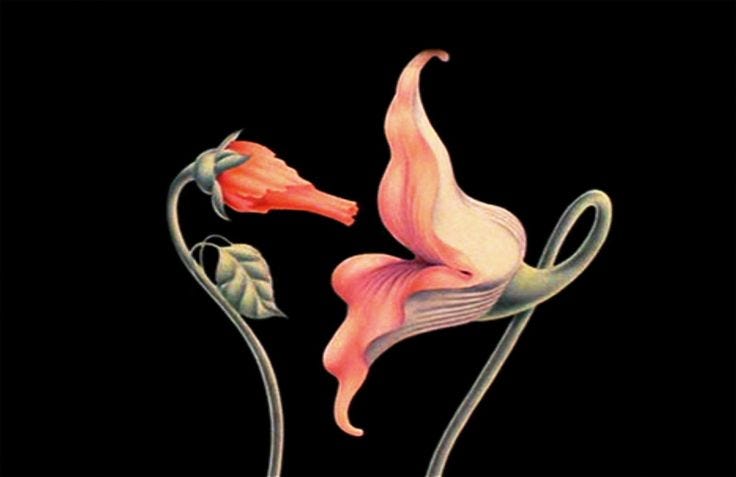


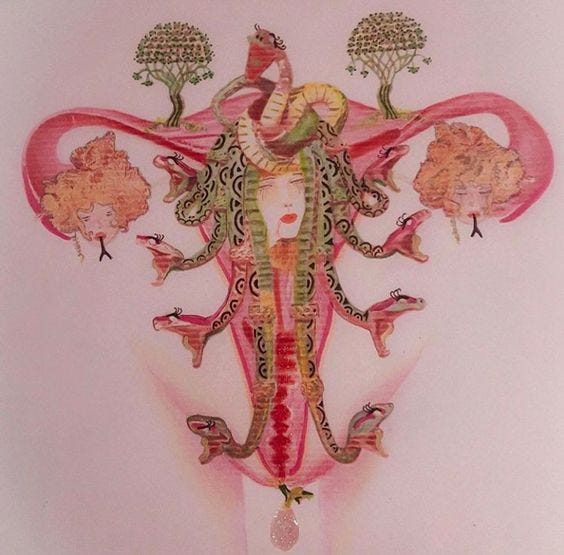
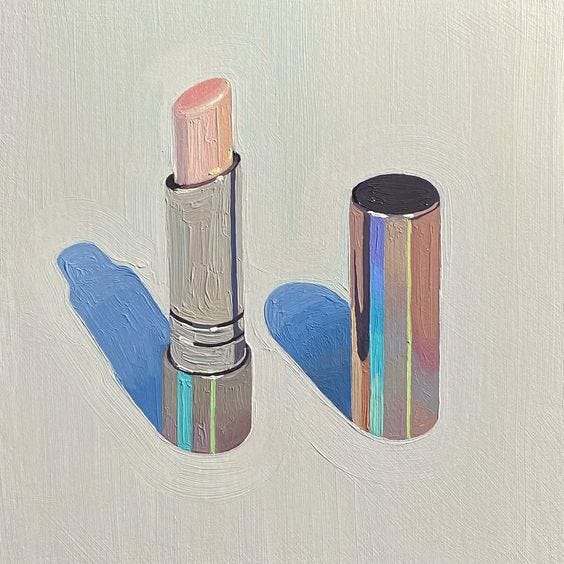



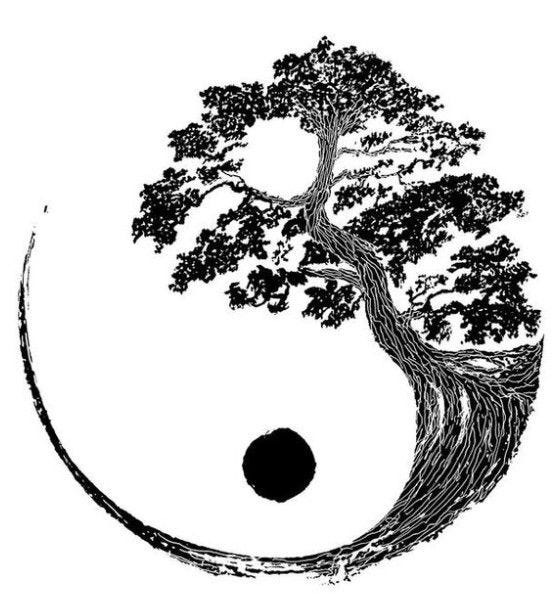


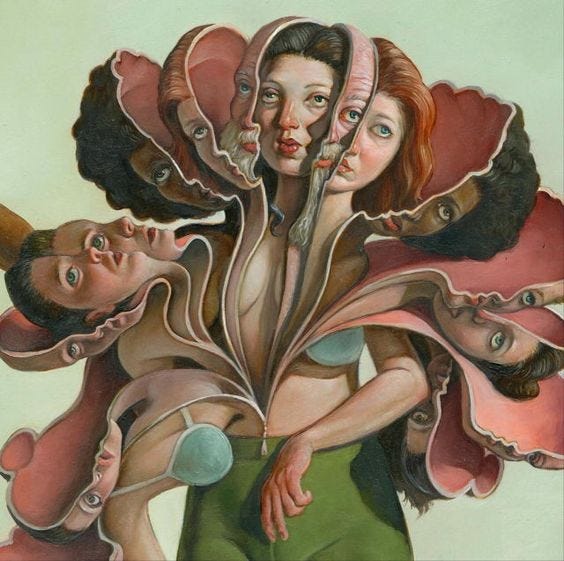
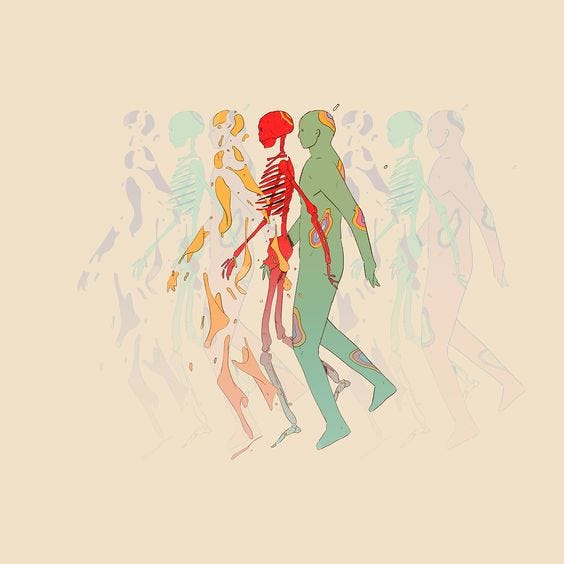
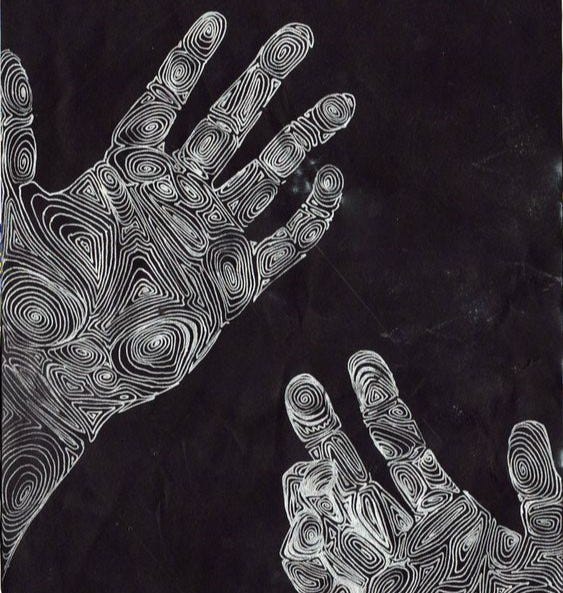
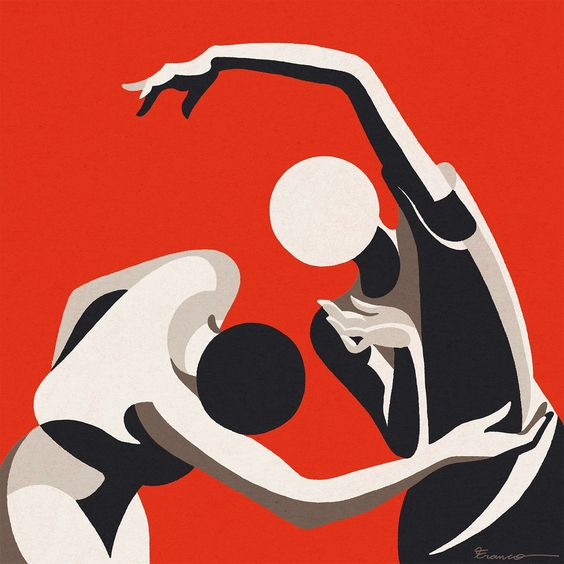
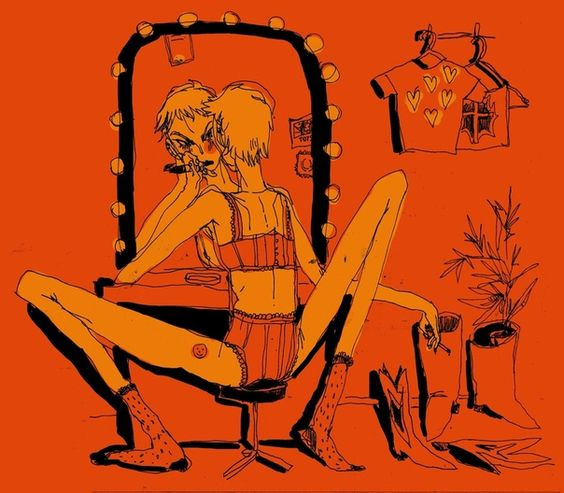



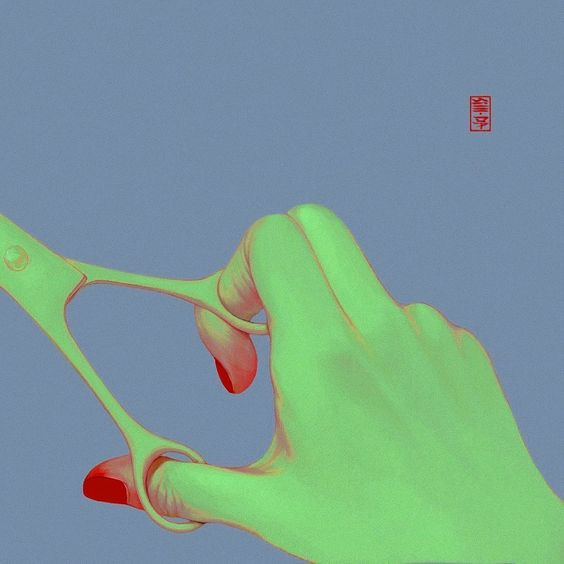

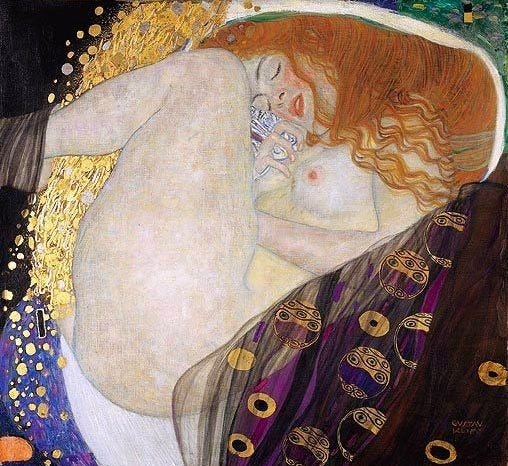
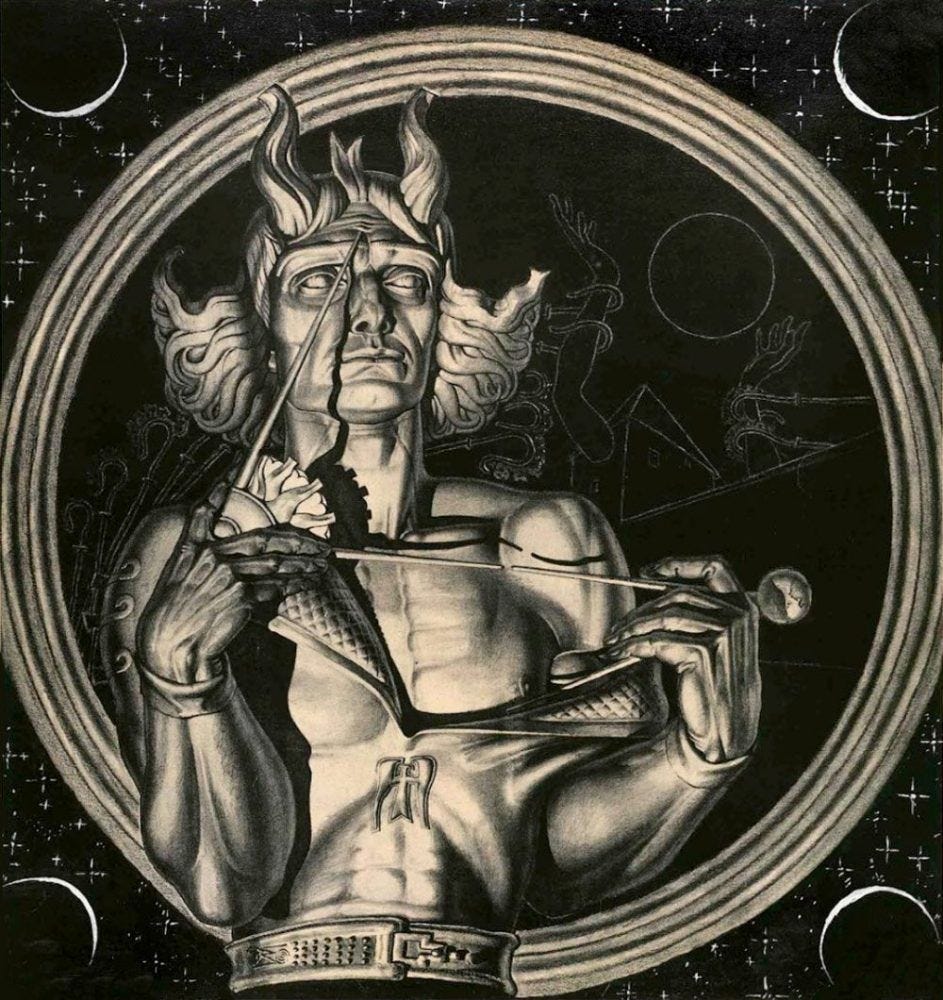


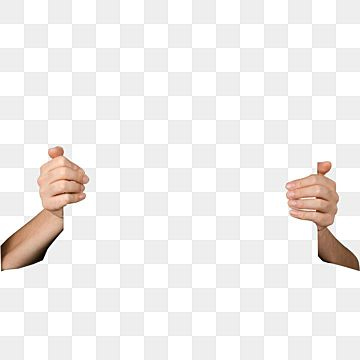









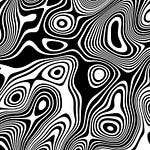
Share this post